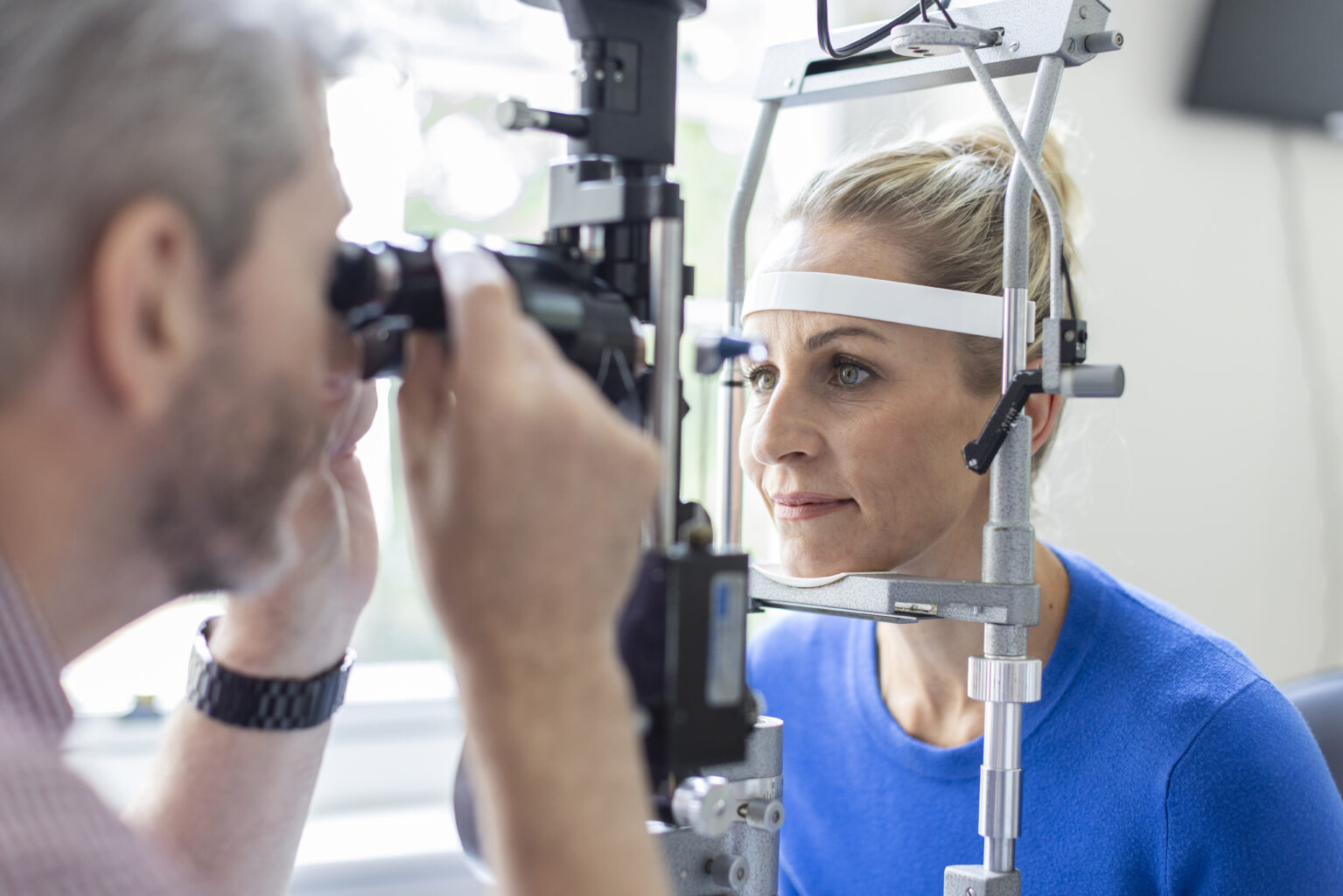Contact number: 020 7806 4060
What is an OCT Scan?
An OCT scan is a high-resolution imaging technique that uses light waves, specifically near infrared light, to capture three-dimensional images of the eye. It is a noninvasive imaging method that produces detailed visuals of the retinal layers, optic nerve, and other ocular tissues.
Unlike other imaging modalities, OCT does not use radiation. Instead, it relies on low coherence interferometry to measure the optical path length of reflected light from various depths of the eye, producing high resolution images of internal eye structures.
OCT imaging is commonly used to:
- Assess the health of the optic nerve
- Detect retinal diseases such as macular holes or diabetic retinopathy
- Monitor changes in retinal thickness or nerve fiber layer
- Support early detection of developing glaucoma
- Track progression of age-related macular degeneration
Modern OCT systems include spectral domain OCT (SD-OCT) and swept source OCT (SS-OCT), which offer improved speed, signal-to-noise ratio, and axial resolution. These allow clinicians to achieve high resolution pictures of the retina in just a few seconds.
Ocular Tomography at St John & St Elizabeth Hospital
At St John & St Elizabeth Hospital, we use advanced OCT systems to provide private, consultant-led imaging as part of your ongoing eye care. Whether you’re attending a routine annual eye exam or being monitored for a specific condition, ocular tomography plays an essential role in your clinical diagnosis.
Here’s what to expect from your visit:
- Expert-Led Care: Our ophthalmic consultants interpret OCT scan results as part of a wider clinical assessment.
- State-of-the-Art Technology: We use spectral domain and swept source OCT systems for clear, high resolution imaging of the retina and optic nerve.
- Early Detection & Monitoring: OCT helps identify changes that could signal the onset of conditions such as optic neuritis or retinal edema.
- Convenient Access: Based in NW8, we’re ideally placed for patients travelling from Hampstead (NW3), Kilburn (NW6), and across North West London.
Your OCT exam is fast, painless, and non-invasive. It requires no contact with the eye and is often performed without dilation.
How much does a private OCT Scan cost?
£180*
*The price shown includes all hospital-related costs for your OCT scan. It does not include consultation fees or any additional diagnostics that may be required.
How to pay for your treatment
If you’re… paying for yourself
Did you know you don’t need private medical insurance to come to St John & St Elizabeth Hospital? As a self-pay patient, you can access safe, outstanding quality health care at times to suit you.
For scans and tests, as well as to see most consultants, you’ll still need to be referred by a medical professional like your GP, but as a self-pay patient, the process is more straightforward. You won’t need authorisation from an insurance provider, and you’ll have greater choice of consultant and appointment times.
If you’re… insured
St John & St Elizabeth Hospital is approved by all major medical insurance companies. If you have a personal private health insurance policy, or your company provide it for you, you can use it to pay for your care from your initial consultation through to treatment, surgery and aftercare such as physiotherapy. Not all private health insurance plans cover the same things. It’s very important to check exactly what you are covered for with your insurance provider.
Frequently Asked Questions about Ocular Tomography
Optical coherence tomography is used to detect and monitor many eye conditions, including:
- Glaucoma. This is where pressure builds up in your eye, which can damage your optic nerve.
- Diabetic retinopathy. Diabetes can lead to damage of the small blood vessels in your eye, leading to vision loss. However, with treatment, diabetes-related retinopathy can be controlled.
- Age-related macular degeneration. This is an age-related progressive disease that leads to sight loss. However, treatments are available for some forms.
- Macular hole. This happens when the retina pulls apart, creating a hole. This can be treated with surgery.
- Epiretinal membranes and thinning of retinal layers
Your consultant will use your OCT results alongside a full clinical examination to guide treatment decisions and long-term care.
St John & St Elizabeth Hospital is located in St John’s Wood (NW8), a well-connected part of North West London near Regent’s Park and Abbey Road Studios. We are easily accessible from nearby areas such as Hampstead (NW3) and Kilburn (NW6):
By Tube:
St John’s Wood station (Jubilee Line) is a 5-minute walk from the hospital.
By Bus:
- Wellington Road: Routes 13, 46, 82, and 113
- Circus Road: Routes 46 and 187
- Abbey Road: Routes 139 and 189
By Car:
We are easy to reach via Finchley Road or Kilburn High Road from NW3 and NW6.
OCT scans differ from other imaging modalities like fluorescein angiography or magnetic resonance imaging. OCT provides high resolution, cross sectional images of the retina using reflected light rather than contrast dye or radiation.
Spectral domain OCT and swept source OCT are newer, faster technologies compared to earlier systems such as time domain OCT or TD-OCT. They allow clinicians to capture more detail in a shorter time, increasing accuracy and patient comfort.
Yes, OCT is a safe, noninvasive imaging method that uses light, not radiation, to visualise the retina and optic nerve. It can be repeated as needed without risk and is safe for both adults and children.
A standard optical coherence tomography scan takes just a few minutes. There is no contact with the eye, and no recovery time is needed. You can return to normal activities immediately after your test.

